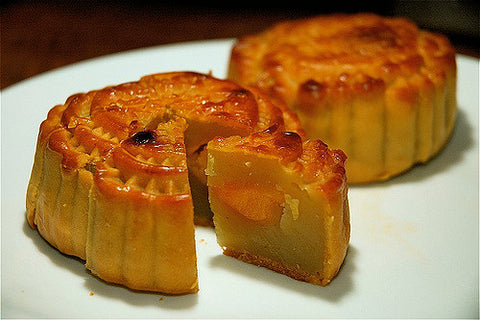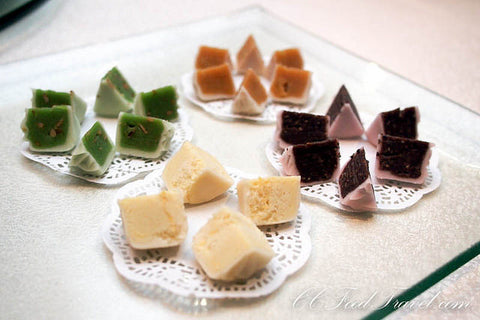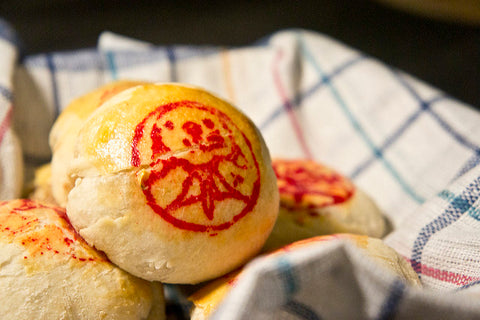
The Mid-Autumn Festival: Family, the Full Moon, and Mooncakes
You might already know about Lunar New Year, the biggest holiday in many Asian countries, but how about the second biggest holiday?
The Mid-Autumn Festival, sometimes called the Moon Festival, falls on the 15th day of the eighth lunar month (Sept. 17 this year). So what is it? Imagine Thanksgiving but instead of eating turkey and watching football, you feast on mooncakes and gaze at the full moon.
The holiday has been celebrated for thousands of years, starting in the 10th century during the Northern Song Dynasty. But where did it come from?
Origin stories
The Moon Goddess
The festival has many origin stories, but the most widely accepted seems is about the goddess who inhabits the moon.

Chang’E wasn’t always so celestial. She started as the ordinary wife of famed archer Hou Yi, who saved the earth from burning to a crisp by shooting down nine out of 10 suns. Pleased with Hou Yi, the queen of heaven gifted him with an elixir which would grant him immortality. But Hou Yi didn’t want to live forever. He only wanted to live with his mortal wife. So he left the potion untouched at home.
Unfortunately, his jealous apprentice Feng Meng had witnessed the elixir exchange, and barged into Hou Yi’s house while he was away, demanding it from Chang’E. Having no choice, she downed the concoction herself and immediately flew up to the moon, where she’d live as a goddess for the rest of eternity.
Now it’s said you can see her face in the full moon.
The Moon Rabbit
Also called the Jade or Gold Rabbit, as jade and gold were often used to refer to the moon, the Moon Rabbit, like Chang'E, began as a mortal.

He, a fox, and a monkey were approached by three immortals disguised like beggars and asking for food. While the fox and monkey handed the vittles over, the rabbit unfortunately had none to give. A generous soul, he jumped in the fire, sacrificing himself as a meal instead. The immortals promptly rewarded him by sending him up to the moon to live forever with Chang’E.
Sometimes the rabbit is shown with a mortar and pestle. In Chinese folklore, he’s making the immortal elixir for Chang’E while in Japanese and Korean tradition, he’s pounding the ingredients for rice cakes.
The legend of the Moon Rabbit lives on: China’s unmanned lunar rover, which was named Yutu, or Jade Rabbit.
Old traditions
Some say it’s Chang’E ancient people prayed to during the festival. Others say it’s the moon itself with the belief that it, along with the sun, controlled the universe. Either way, paying homage to the harvest moon was believed to bring prosperity and happiness.
To do so, says The Atlantic, women would arrange an altar in their family’s courtyard. In the altar would be Moon Rabbit replicas, melons and pomegranates (which stand for fertility), and 13 mooncakes, one for each of the 13 months of the lunar calendar. Families would worship the moon together, then chow down on the cakes.
Current customs
While some celebrations call for elaborate lantern displays, lion dancing, and fireworks, what the Mid-Autumn Festival comes down to being with loved ones.

Like Thanksgiving, it's a time for homecoming and family reunions. Those who can’t be with family — Moon Festival orphans, if you will — gather together to lament their homesickness, light lanterns, laud the full moon, and of course feast on mooncakes.
The meaning of mooncakes
But what are mooncakes exactly? They might be thought of as the fruitcake of Chinese culture: dense, very traditional, and often reviled.

They're also full of meaning. The round shape not only symbolizes the moon but also completeness, unity, fulfillment, and perfection. To emphasize the roundness and stand for the phases of the moon, sometimes one or more salted duck egg yolks are wedged in.
Despite the briny surprise, the cakes are often mildly sweet with fillings of lotus or red bean although savory pork is also available. Modern flavors include green tea, taro, durian, pineapple, chocolate, tiramisu, and cream cheese.

The cakes differ from region to region. In Beijing they're are often meticulously carved while the Suzhou variety are known for their lighter, flaky crust.

In Hong Kong traditional mooncakes are eaten as well those with “snowskin,” a glutinous rice crust.

You won’t find any duck eggs in these frozen treats which bear more of a resemblance to mochi ice cream than yuebing.
Learn more
Want to enjoy the Mid-Autumn Festival first hand? You might like our mooncakes and other Mid-Autumn Festival items. You can also learn more about Asian holidays with our posts on the Hungry Ghost Festival, the Qixi Festival, and the Dragon Boat Festival. And catch up on more foodie fun facts with eight things you might not know about fortune cookies and eight lucky foods to eat during the Lunar New Year.
[Images: “Chang'e Flying to the Moon” by Ren Shuai Ying, Public Domain; “White Hare of the Moon,” Public Domain; “happy mid autumn moon festival” by tommy@chau, CC BY 2.0; “Mooncake side view” by Wee Keat Chin, CC BY 2.0; “P8129937” by CCFoodTravel.com, CC BY 2.0; “Homemade Moon Cake” by Ruocaled, CC BY 2.0; “P1130909” by lr175, CC BY 2.0]